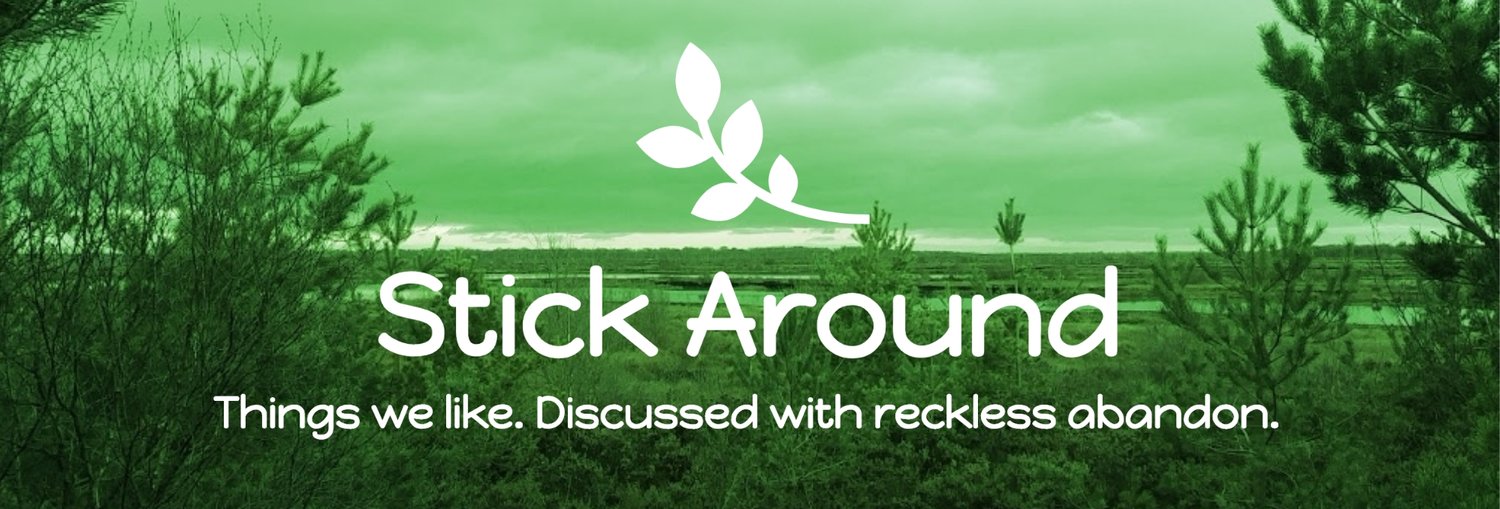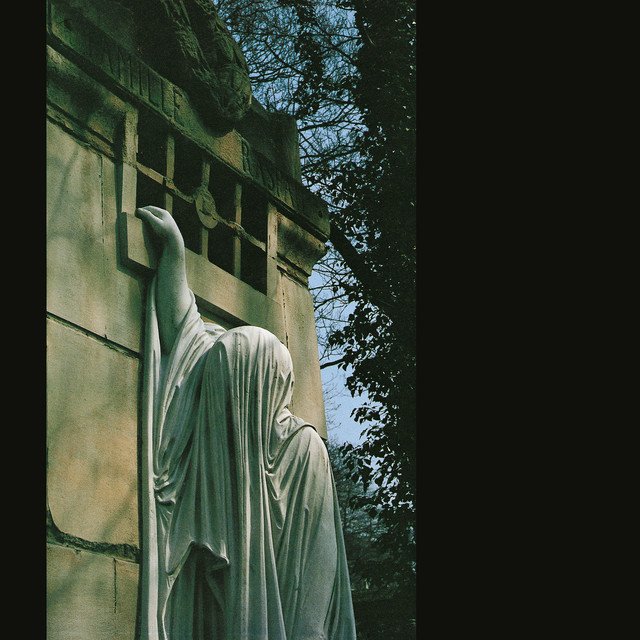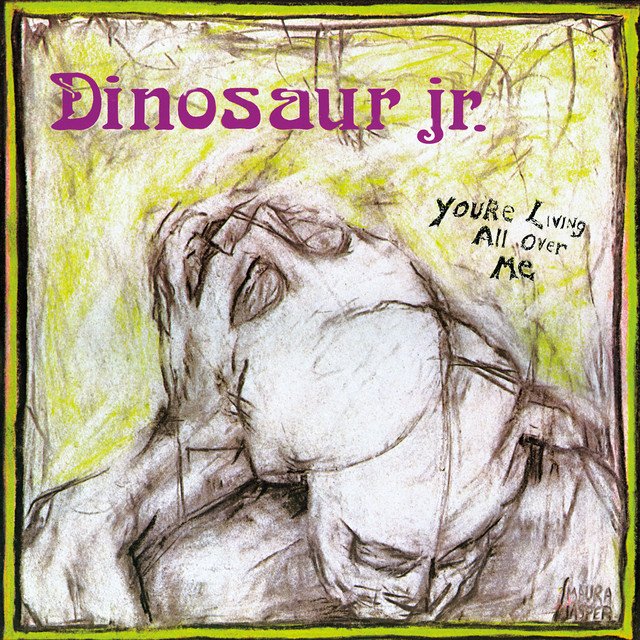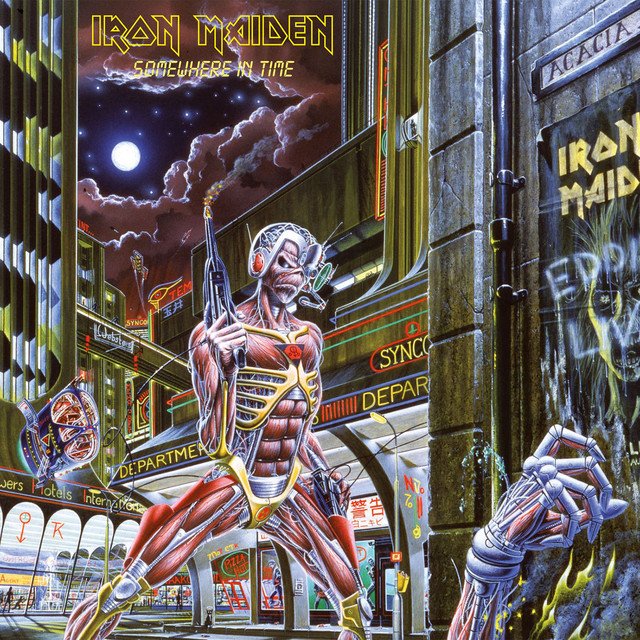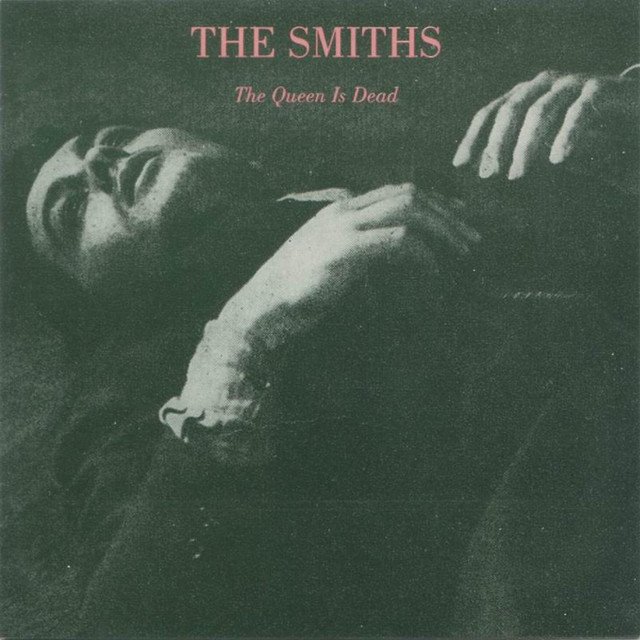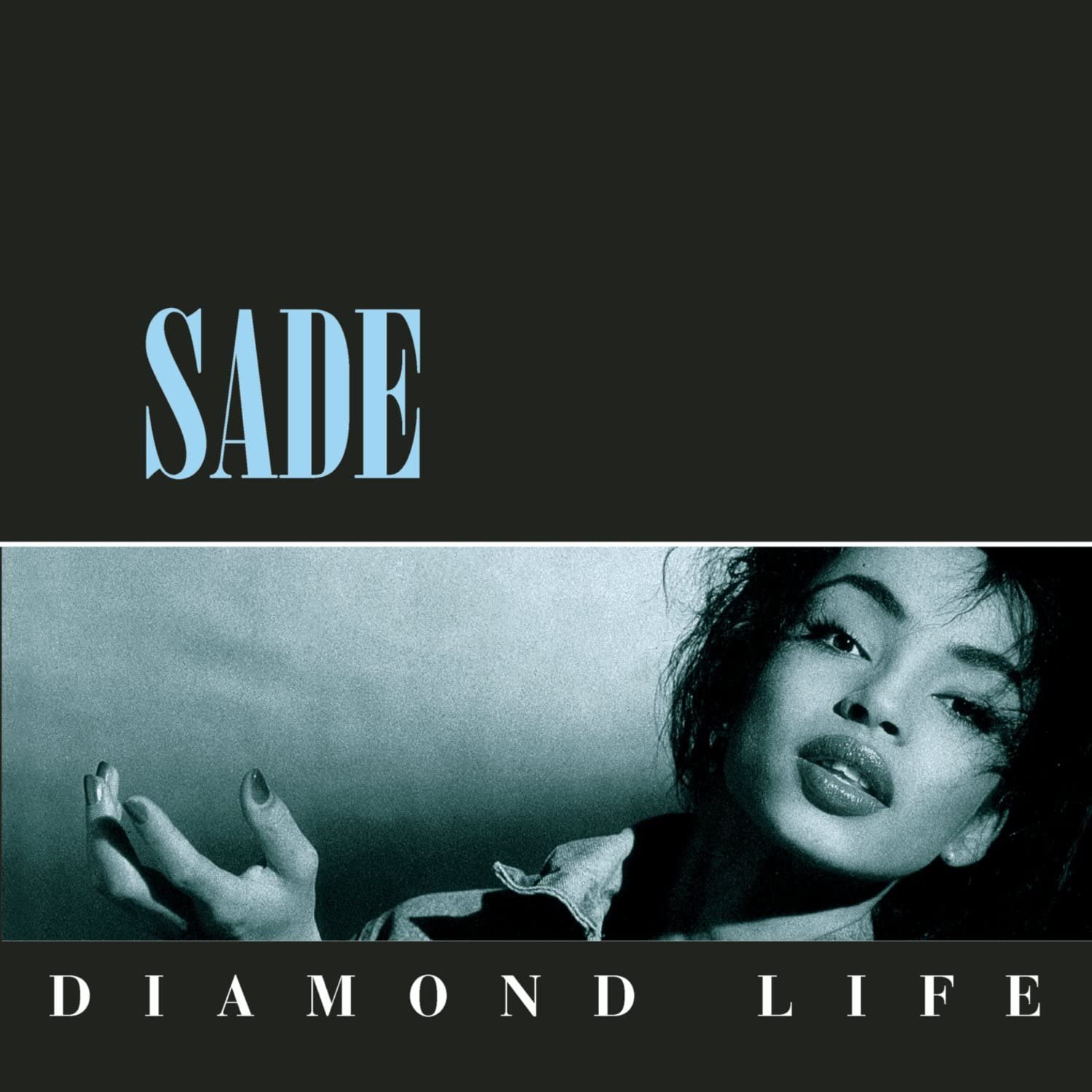1987 - Clive's Top Albums of Every Year Challenge
And so, 27 years down the line from 1960, the first year we covered, we’re up to my birth year, 1987, which seems quite poignant with the birth of my own son due for the end of the month. Other than the momentous fact that I was born, without which this whole daft challenge wouldn’t exist, there were some other events in 1987. Namely: Margaret Thatcher won a rare third term as Prime Minister in the UK, the term ‘world music’ was apparently coined, the US Supreme Court ruled that Rotary Club rules must admit women, and Óscar Arias Sánchez won the Nobel Peace Prize for his efforts to end the Central American crisis.
On the album side of things, here’s what rateyourmusic.com’s users rate as their top 5 albums of the year:
#1 Prince - Sign o’ the Times
#2 Sonic Youth - Sister
#3 Dinosaur Jr - You’re Living All Over Me
#4 Requiem - Wolfgang Amadeus Mozart / Franz Xaver Süssmayr
#5 Dead Can Dance - Within the Realm of a Dying Sun
I’ll also grab this lot from further down the list:
#9 Swans - Children of God
#10 Depeche Mode - Music for the Masses
#12 Tom Waits - Frank’s Wild Years
#18 The Smiths - Strangeways Here We Come
#20 U2 - The Joshua Tree
and these from Pitchfork’s top 20 of the 1980s list that aren’t on rateyourmusic.com’s list:
Eric B & Rakim - Paid in Full
Boogie Down Productions - Criminal Minded
and finally, these from NPR readers’ list of the best albums by female artists:
Whitney Houston - Whitney
Sinead O’Connor - Lion and the Cobra
That’s 14 albums to check out, let’s go.
14. Whitney
Whitney Houston
“Whitney is the second studio album by American singer Whitney Houston, released on June 2, 1987, by Arista Records as the follow-up to her best-selling debut album, Whitney Houston. The album features five top 10 hits on the US Billboard Hot 100, which also became international hits. The album's first four singles—I Wanna Dance with Somebody (Who Loves Me), Didn't We Almost Have It All, So Emotional and Where Do Broken Hearts Go—all peaked at number one on the US Hot 100, making her the first female act to achieve four number one hits from one album.” - Wikipedia
When an album opens with one of the finest pop songs ever written, I Wanna Dance With Somebody, with its impossibly uplifting chorus, perfect brass stabs and what is surely one of the finest vocal performances on a pop song ever, it’s going to be difficult for the rest of the album to keep up. Whitney has a good go though. As many critics expressed at the time, it sticks pretty rigidly to the formula of the first album and as such there’s nothing particularly new here, but the production is silky smooth, Whitney’s vocals and melodies are as powerful as ever, and the tracks are of good quality from start to finish. It’s a thoroughly enjoyable dip into 80s pop.
Song Picks: I Wanna Dance with Somebody (Who Loves Me), Where Do Broken Hearts Go
8/10
13. Music for the Masses
Depeche Mode
“Music for the Masses is the sixth studio album by English electronic music band Depeche Mode, released on 28 September 1987 by Mute Records. The album was supported by the Music for the Masses Tour, which launched their fame in the US when they performed at the Rose Bowl in Pasadena. The tour led to the creation and filming of the documentary/live album titled 101. This saw the band using heavy amounts of sampling, much like they did in their previous album Black Celebration.” - Wikipedia
Depeche Mode sound like a kind of mix of Kraftwerk and Tears for Fears to me, with the slightly robotic detachment of the former, and the more atmospheric electronic soundscapes of the latter. They sure know how to make a tuneful synth line, as shown on The Things You Said and Strangelove, among others. David Gahan’s vocals are either multi-tracked, or have some sort of chorus effect on them, giving them a slightly washed-out quality that works well with the often bleak minor key melodies he sings.
Music for the Masses isn’t trying to be feel-good or fun, but it is remarkably tuneful for an album as bleak as concrete in a J.G Ballard novel.
Song Picks: The Things You Said, Strangelove, Nothing, To Have and to Hold
8/10
12. Requiem
Wolfgang Amadeus Mozart and Franz Xaver Süssmayr
It’s hard to find much online about this particular recording, but the following paragraph from Wikipedia gives some context to the piece’s composition:
“The Requiem in D minor, K. 626, is a requiem mass by Wolfgang Amadeus Mozart (1756–1791). Mozart composed part of the Requiem in Vienna in late 1791, but it was unfinished at his death on 5 December the same year. A completed version dated 1792 by Franz Xaver Süssmayr was delivered to Count Franz von Walsegg, who commissioned the piece for a requiem service on 14 February 1792 to commemorate the first anniversary of the death of his wife Anna at the age of 20 on 14 February 1791.” - Wikipedia
This 1987 recording is performed by the Vienna Philharmonic and conducted by Herbert von Karajan, and it’s as dramatic as you’d expect. It’s one of the first classical pieces we’ve had on this challenge where I‘ve not recognised any of it, and one of the most affecting. The choir adds a full and rich sound that helps to round out some of the sharper edges coming from the string and brass sections. Appropriate to its title, the recording definitely has a funeral feel to it. It’s beautifully performed throughout, but there’s a few moments that really stand out, such as particular sections of III: c Rex Tremendae where the choir and orchestra combine so perfectly I thought it was me who’d made it to heaven. I’m not particularly knowledgeable about classical music as you’ll have gathered by now, but I do appreciate it, and this is another recording I’m really glad to have been enlightened to.
8.5/10
11. Within the Realm of a Dying Sun
Dead Can Dance
“Within the Realm of a Dying Sun is the third studio album by Australian band Dead Can Dance. By this time, Dead Can Dance were predominantly a duo of Lisa Gerrard and Brendan Perry, along with Peter Ulrich, after the departure of Scott Rodger and James Pinker in 1987.” - Wikipedia
Lisa Gerrard famously sings that song in Gladiator where she uses glossolalia (sounds made to sound like words and speech while not being in any language) to great effect. On this album, it takes a while for her vocal to start gaining prominence, but when it does, as on the penultimate track Summoning of the Muse, it’s all-encompassingly vast, the church bells behind her ringing as she seemingly echoes out from the top of the tower for all the world to hear. Brendan Perry’s vocal, which features more on the opening tracks of the album, is a little less remarkable, but it blends well with the gothic, heavily reverbed instrumentation behind him.
Within the Realm of a Dying Sun is incredibly atmospheric, and it’s easy to get lost in its wells of slow melodies and cathedral reverbs. The drama has been turned up to 11, which at times can be a bit too much, but if you catch this album at the right time it’s spectacular experience.
Song Picks: Summoning of the Muse, Persephone (The Gathering of Flowers)
8.5/10
10. Paid in Full
Eric B. & Rakim
I love it when a new genre appears on this challenge, it’s exciting. This particular genre will be making an appearance in pretty much every year from now on I imagine, It’s a grand welcome to……. hip-hop.
“Paid in Full is the debut album of American hip hop duo Eric B. & Rakim, released on July 7, 1987, by Island-subsidiary label 4th & B'way Records. The duo recorded the album at hip hop producer Marley Marl's home studio and Power Play Studios in New York City, following Rakim's response to Eric B.'s search for a rapper to complement his disc jockey work in 1985. The album peaked at number fifty-eight on the Billboard 200 chart, number eight on the R&B/Hip-Hop Albums chart, and produced five singles: Eric B. Is President, I Ain't No Joke, I Know You Got Soul, Move the Crowd, and Paid in Full. Paid in Full is credited as a benchmark album of golden age hip hop. Rakim's rapping, which pioneered the use of internal rhymes in hip hop, set a higher standard of lyricism in the genre and served as a template for future rappers.” - Wikipedia
I think that Wikipedia blurb pretty much sums it up. Paid in Full is hugely influential. I mean without Rakim pioneering of internal rhymes we’d never have had the following Flight of the Conchords lyric:
And he said, "Can somebody
Get the knife and fork out of my leg, please"
"Can somebody please remove
These cutleries from my knees"
Obviously, that would have been a travesty. That aside, the beats, DJ scratching and Rakim’s flow all just oozes old-school cool, and what more could one want from early hip-hop?
Song Picks: I Ain’t No Joke, I Know You Got Soul, Paid in Full
8.5/10
9. Franks Wild Years
Tom Waits
“Franks Wild Years is the tenth studio album by Tom Waits, released 1987 on Island Records. Subtitled Un Operachi Romantico in Two Acts, the album contains songs written by Waits and collaborators (mainly his wife, Kathleen Brennan) for a play of the same name. The shared title of the album and the play is an iteration of Frank's Wild Years, a song from Waits' 1983 album Swordfishtrombones.” - Wikipedia
Generally considered the final album of a trilogy that includes Swordfishtrombones and Rain Dogs, Franks Wild Years continues in a similar vein, with the familiar and unique barroom instrumentation of the previous two albums. It also continues the trend of having a mix of songs containing more substantial melodic instrumental parts and those with more space, where Waits’ vocals carry the vast amount of the melody.
By virtue of this being the third album in this style, the sound loses some of its freshness, but there was still no one out there making music like Tom Waits at the time. We’ve still got atmospheric production and raw-sounding varied instrumentation, and Waits’ vocals continue to have that worn growl. Lyrically the album again tackles the lives of the downtrodden, and his lyrics are as vivid as ever. I think you could certainly argue that Franks Wild Years is the most varied album of the three, and that is quite the achievement, which is largely led by Tom’s more open and free vocal style on the record. Frank’s Wild Years is consistently very good, but doesn’t quite achieve the highs of Rain Dogs, though the beautiful Innocent When You Dream and comes mighty close. Nevertheless, this is another brilliant record, in what is surely one of the 80s strongest album runs.
Song Picks: Temptation, Innocent When You Dream (both versions), Way Down in the Hole, Cold Cold Ground, I’ll Take New York
8.5/10
8. Children of God
Swans
“Children of God is the fifth studio album by American experimental rock band Swans. It was released on October 19, 1987 through record label Caroline. The album was recorded over the course of six weeks in February–March 1987 at Sawmills Studios in Cornwall, England. It represented a dramatic, experimental change in sound from earlier Swans releases.” - Wikipedia
In the words of vocalist Michael Gira: “By 1986/7 Swans had run its course with the physical assault of sound that we had employed previously for the most part. I wanted to move on to other things and didn’t want to get stuck in some style, which in our case had the potential of becoming cartoonish if we’d continued in that direction. So, I pushed the music into unfamiliar territory.”
Children of God is slightly less of a bludgeon to the head than the previous Swans album we’ve had on these lists, Filth. There’s even some acoustic tracks here, which would have been unthinkable back then. In the words of Super Hans from Peep Show ‘the longer the note, the more dread’, and Children of God revels in a sense of dread, though it does this more with the heavy reverb and space in between notes than their length specifically. Whether distorted guitars or gently plucked acoustic guitar notes, each of these songs is a slow dirge, a fight through treacle in the belly of a whale that has just eaten you, a speedy punk rock album slowed down until it starts falling apart. I think it’d be fair to say that at over 70 minutes long it overstays its welcome a little, but then Children of God never expected to be welcomed, it just slowly smashed your door down and made a racket. If you submit yourself to the racket for its duration, I can guarantee you’ll come out the other side having experienced something akin to the end of the world, with you passing over to the afterlife during the beautiful closing title track. And who wouldn’t want to experience that?
Children of God is slow, magnificent carnage.
Song Picks: New Mind, Beautiful Child, Children of God
8.5/10
7. Criminal Minded
Boogie Down Productions
“Criminal Minded is the debut studio album by hip hop music group Boogie Down Productions, released on March 3, 1987 by B-Boy Records. It is considered a highly influential hip hop album and one of the first in the gangsta rap genre. Since its release, the album has been sampled, interpolated and paraphrased. Its samples and direct influences were unusual at the time, ranging from liberal use of dancehall reggae (as well as the more commonly used James Brown) to rock music artists such as AC/DC, The Beatles and Billy Joel.” - Wikipedia
Sure, you could argue it sounds primitive when compared to today’s hip-hop productions. The rapping doesn’t have the multitude of cadences and complexity of someone like Kendrick Lamar, and the production is rarely more advanced than a simple drum beat, a repeated bass hook and the odd more trebly instrument, but darn this is enjoyable. It’s old school maaaaan. KRS-One’s vocal has a great timbre for rap, and his lyrics and delivery have an infectious sense of fun to them, even when rapping about more serious topics. Criminal Minded is regarded as one of the first gangsta-rap albums, with tracks like 9mm Goes Bang pioneering ‘first person crime storytelling in rap’ (Pitchfork).
I’m a big fan of Criminal Minded, its simplicity leads to a lot of space, something not all that prominent on more modern hip-hop recordings which follow a much more maximalist vein, and it all just leads to a record that exudes a ‘chill’ atmosphere.
Song Picks: 9mm Goes Bang, South Bronx,
9/10
6. Strangeways, Here We Come
The Smiths
“Strangeways, Here We Come is the fourth and final studio album by English rock band the Smiths. It was released on 28 September 1987 by Rough Trade Records, several months after the group had disbanded. All of the songs were composed by Johnny Marr, with lyrics written and sung by Morrissey.” - WIkipedia
The most noticeable change from the Smiths’ other albums is Johnny Marr’s less speedy guitar riffing, with a style that is a little more restrained and much less jangly, something Marr did very intentionally as he wanted to move the band to a new sound. He even whips out the odd guitar solo. Morrissey’s vocals are also more restrained, featuring less of the faux-operatic and dramatic quality that they’re famous for.
You’d be forgiven for thinking these changes would take away some of the band’s character but, remarkably, I don’t think they do. Morrissey’s vocals may have been reined in, but his lyrics are still punchy, and he’s added a few more techniques to his vocal locker - most notably the odd growl. To me, the new style adds a nice layer of intrigue.
Strangeways Here We Come doesn’t have the song-power that The Queen is Dead has (only Stop Me If You Think You’ve Heard This One Before is a household song thanks to the recent Mark Ronson version) but it is another cohesive statement by the band that has more great songs on than I’d been lead to believe, and that is probably their most atmospheric album. It feels like the transitional album before another masterpiece. Sadly, it was their last.
Song Picks: Stop Me If You Think That You’ve Heard This One Before, I Started Something I Couldn’t Finish, Death of a Disco Dancer, Paint a Vulgar Picture
9/10
5. The Joshua Tree
U2
“The Joshua Tree is the fifth studio album by Irish rock band U2. It was produced by Daniel Lanois and Brian Eno, and was released on 9 March 1987 on Island Records. In contrast to the ambient experimentation of their 1984 release, The Unforgettable Fire, the band aimed for a harder-hitting sound within the limitation of conventional song structures on The Joshua Tree. The album is influenced by American and Irish roots music, and through sociopolitically conscious lyrics embellished with spiritual imagery, it contrasts the group's antipathy for the ‘real America’ with their fascination with the ‘mythical America’.” - Wikipedia
The Joshua Tree opens up with 3 iconic tracks in a row: Where the Streets Have No Name, I Still Haven’t Found What I’m Looking For and With or Without You, all timeless classics that are as great examples of songwriting as they are of atmospheric production. The album’s brilliance doesn’t stop there though, Bullet the Blue Sky features bass that’ll rattle your skull, In God’s Country is an example of The Edge’s brilliant guitar work, showing both his well-known mastering of delay and his lesser-known ability to craft a jangly riff. Eno and Lanois’ production is superb throughout and is a big part of why the album is often called timeless. It doesn’t sound like an 80s album. It really could have come out this year, the 90s, or the 2000s. Every song sounds full and stadium ready. The influence of The Joshua Tree echoes like the delay on one of The Edge’s guitar parts throughout the following decades.
Song Picks: Where the Streets Have No Name, I Still Haven’t Found What I’m Looking For and With or Without You, Bullet the Blue Sky, In God’s Country. One Tree Hill
9/10
4. Sister
Sonic Youth
“Sister is the fourth studio album by American alternative rock band Sonic Youth. It was released in June 1987 by SST Records. The album furthered the band's move away from the no wave genre towards more traditional song structures, while maintaining an aggressively experimental approach. Like Sonic Youth's previous records, Sister was not successful at the time of its release. In the years following, however, it received much critical praise, with several publications naming it as one of the best albums of the 1980s.” - Wikipedia
A loose concept album about the life and works of Philip K Dick, the album is reportedly named after his twin sister, who died shortly after her birth. Sister sees Sonic Youth sand down some of the abrasiveness of EVOL, but more in terms of song structures than sound. There’s more traditional choruses and verses here, but the instrumentation still howls and screams like a dying factory at points. To me, Sister is the brilliant distillation of what their previous experimentation and envelope-pushing has taught them into a package that is a little easier to digest, and I’d say even more brilliant. I’m told their most famous album Daydream Nation (which we’ll get to next year) continues this trend, which has me rather excited.
Sister is a paranoid, dystopian cry fed to us in more bitesisize and digestible chunks, which makes it all the more effective.
Song Picks: Schizophrenia, Catholic Block, White Cross, Stereo Sanctity
9/10
3. You’re Living All Over Me
Dinosaur Jr
“You're Living All Over Me is the second studio album by American alternative rock band Dinosaur Jr. It was released on December 14, 1987, through SST Records. A refinement of the formula introduced on the band's debut album Dinosaur, You're Living All Over Me features drawling vocals paired with loud guitars and driving rhythms. The album was well-reviewed upon release, and is now regarded as a high point of American rock in the 1980s. The album was originally issued when the band was still known as Dinosaur, before a lawsuit forced the name change to Dinosaur Jr.” - Wikipedia
I’m listening to the Merge remaster, which I’m told cleans up the sound of the album somewhat. And indeed it does sound like something that was roughly recorded but well mastered. I can see why this was such a huge influence on many grunge artists later on, and J. Mascis’ vocals have more than a hint of Kurt Cobain about them at points, though he is much less shouty. To me, this sounds like a mix of midwest emo and the upcoming grunge, which qualifies it as a pioneering album in my books. As well as being pioneering though, the album is also hugely enjoyable. J Mascis is clearly the leading creative force here, and it’s his powering guitar-riffs, eclectic solos and melodic and evocative vocal lines that make the album what it is, with Murph’s drums and Lou Barlow’s bass making a very solid, if unremarkable rhythm section.
You’re Living All Over Me is one of those albums that would sound like a greatest hits album if it wasn’t so roughly recorded, it’s just full of great songs from start to finish, largely thanks to J Masics’ superb ability to write effective choruses, though I love his unbarred guitar solos too (Raisans being a great example). I have a J Mascis signature Squier guitar, which I bought before I’d listened to the band because I loved the look of it, so I’m extra pleased the guy is behind one of the 80s’ best albums.
Song Picks: Little Fury Things, Sludgefeast, Tarpit
9.5/10
2. Sign o’ the Times
Prince
“Sign o' the Times is the ninth studio album by American singer, songwriter, producer, and multi-instrumentalist Prince. It was first released on March 31, 1987 as a double album by Paisley Park Records and Warner Bros. Records. The album is the follow-up to Parade and is Prince's first album following his disbanding of the Revolution. The album's songs were largely recorded during 1986 to 1987 in sessions for releases Prince ultimately aborted: Dream Factory, the pseudonymous Camille, and finally the triple album Crystal Ball. Prince eventually compromised with label executives and shortened the length of the release to a double album.” - Wikipedia
From the opening of the title track, it’s clear Prince is turning up the funk on this album. Who knew tracks featuring programmed drums could be this funky? It turns out that with the help of catchy bass lines and a measured sprinkling of superb guitar licks they can. All this is repeated again in Housequake, one of the album’s most infectiously fun tracks.
The album is essentially just a great showcase of Prince's musical prowess. Prince is credited as playing ‘various instruments’, which seems to equate to pretty much all of them, as well as programming the drums (which are really well done considering the age of this album). He shows a Stevie Wonder level of multi-instrumental musical genius that you can’t help but respect. That’s before we even talk about his consistently alluring and singular vocal performances. There's a wide variety to the songs too with that punchy programmed drum sound, and consistently great melodies still giving the album a thread of cohesion.
As a side note, the digital version of the original album seems to have numerous volume imbalance issues with some tracks much louder than others. Though I’m not always a fan of remasters, if listening on streaming services I’d recommend listening to the 2020 remaster in this case, where the volume levels are a little more consistent.
Sign o’ the Times is less of a coherent statement than the masterpiece that is Purple Rain and instead it feels like an album showing us the breadth of what Prince can do. “What can he do?” I hear you ask. Well, he can make music that’s as fun as anything ever recorded, that’s what.
On that note, I literally can’t listen to I Could Never Take the Place of Your Man and not be in a good mood. That thing is an 80s guitar-solo-infused ecstasy pill.
Song Picks: Sign O’ the Times, Housequake, I Could Never Take the Place of Your Man, It, U Got the Look
9.5/10
1. The Lion and the Cobra
Sinéad O'Connor
“The Lion and the Cobra is the debut album by Irish singer Sinéad O'Connor, released on 4 November 1987 by Ensign and Chrysalis Records. O'Connor recorded the album while in the later stages of pregnancy with her first child. The title of the album is from Psalm 91:13 ‘you will tread upon the lion and cobra"‘, and the track Never Get Old opens with an Irish language recital of Psalm 91 by singer Enya.” - Wikipedia
It turns out there’s more to Sinead O’Connor than her famous cover of Prince’s Nothing Compares 2 U. The Lion and the Cobra is an ambitious album that demands your attention. O’Connor’s angry, at times tormented vocals aren’t conducive to great background listening, but that’s not what she wants to be. The Lion and the Cobra is full of attitude, and occasionally restrained anger at the world. She herself said “I couldn’t admit it was her I was angry at, so I took it out on the world” referring to her anger at her abusive mother, who died in a car crash when O’Connor was 19.
Songs like Mandinka and Jerusalem are some of the decade’s most powerful songs, and the album jumps from huge productions like those to sections of songs like Never Get Old that are almost acapella, save for some muted drums somewhere in the background. Her vocals though, consistently roar with the energy of a high-speed train. There are famously two covers to the album: the one where she looks as if she’s shouting but was apparently singing above, and the North American version where they decided she needed a ‘softer’ image. Screw that, the above cover is perfect. It looks like someone who has repressed their anger so much that when they try to look angry, they look close to maniacal laughter. On the Lion and the Cobra that mania is there for all to hear, the catharsis palpable, and the creativity undeniable. I think it’s one of the decade’s most underrated albums.
Song Picks: Troy, Mandinka, Jerusalem
9.5/10
